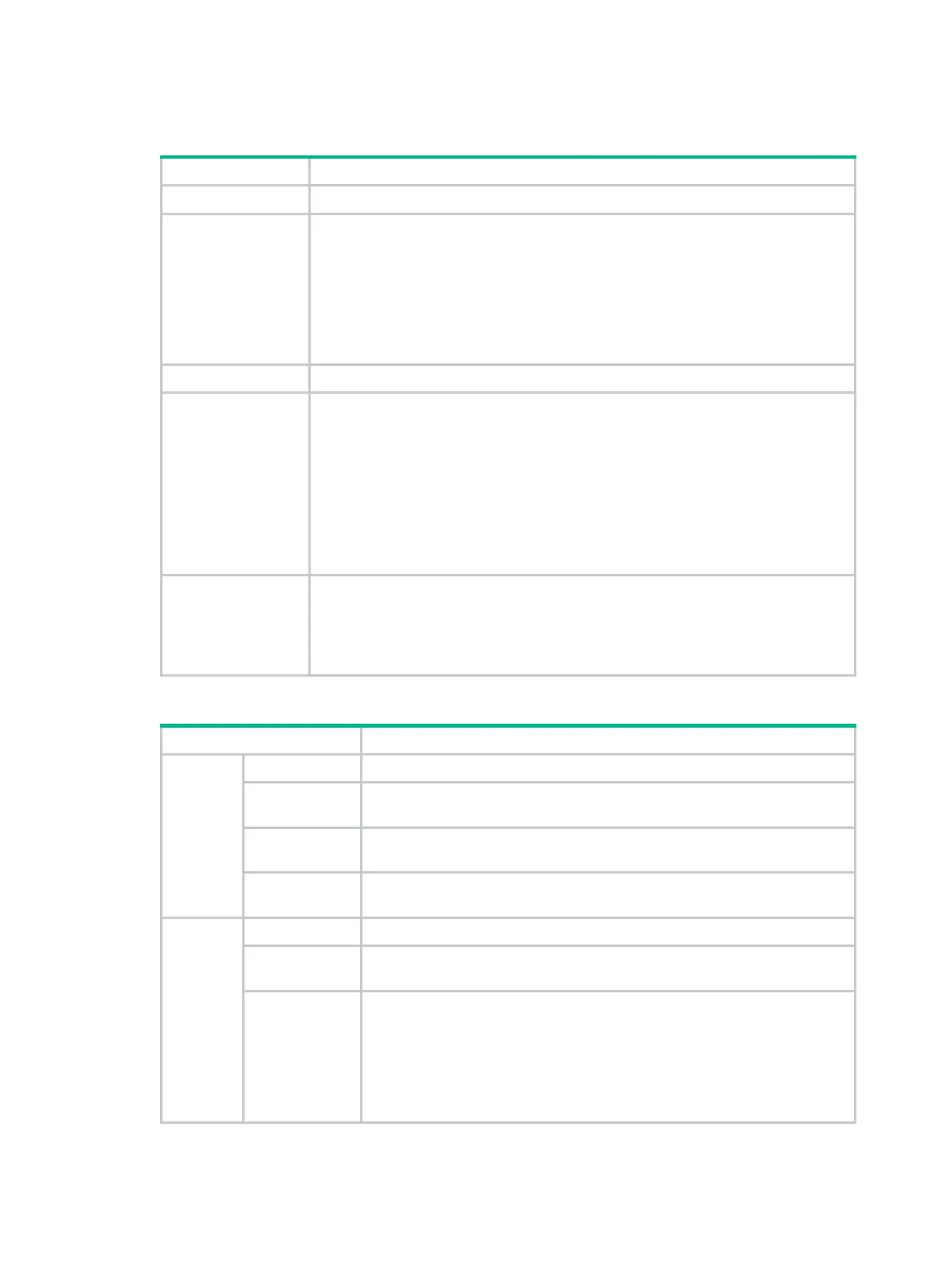68
4. Click Apply.
Table 186 Configuration items
Item Description
Name Enter a name for the security policy.
Level
Set a level for the security policy. A larger number means a higher level.
If multiple security policies are defined, the system first uses the security policy with
the highest priority to check the user host. If the host does not satisfy the security
policy, the system uses the security policy with the second highest priority, and so
forth until the host satisfies a security policy or fails security check. The resources
that the user can access are those defined in the security policy that the user first
passes. Therefore, when you configure security policies, specify more resources for
a security policy that has a higher level.
Description Enter a description for the security policy.
Policy Configuration
Set check rules for the security policy.
Check rules fall into seven categories: operating system, browser, antivirus
software, firewall, certificate, file, and process.
To pass the check of a category, a host needs to satisfy at least one rule of the
category. To pass the check of a security policy, a host must satisfy all categories of
the policy.
Click the expansion button before a category to view the rule information. Click the
Add
button to add a rule for the category. For more information about rule
configuration, see
Table 187
.
Resource
Configuration
Specify the resources that can be accessed by user hosts that satisfy the security
policy.
You can select
All Web Proxies
,
All TCP Applications
, and
all IP Networks
. To
select specific Web proxies, TCP applications, or IP networks, click the
corresponding expansion button.
Table 187 Configuration items
Item Description
Operating
System
Rule Name Enter a name for the operating system rule.
Type
Specify the operating system type. A user host must run the specified type
of operating system to pass security check.
Version
Specify the operating system version. The operating system of a user host
must satisfy the version requirement to pass security check.
Patch
Specify the operating system patches. The operating system of a user host
must have the specified patches installed to pass security check.
Browser
Rule Name Enter a name for the browser rule.
Type
Specify the browser type. A user host must use the specified type of browser
to pass security check.
Operator
Set an operator for the browser version check.
• >=: A user host must use the specified version or a later version.
• >: A user host must use a version later than the specified version.
• =: A user host must use the specified version.
• <=: A user host must use the specified version or an earlier version.
• <: A user host must use a version earlier than the specified version.
